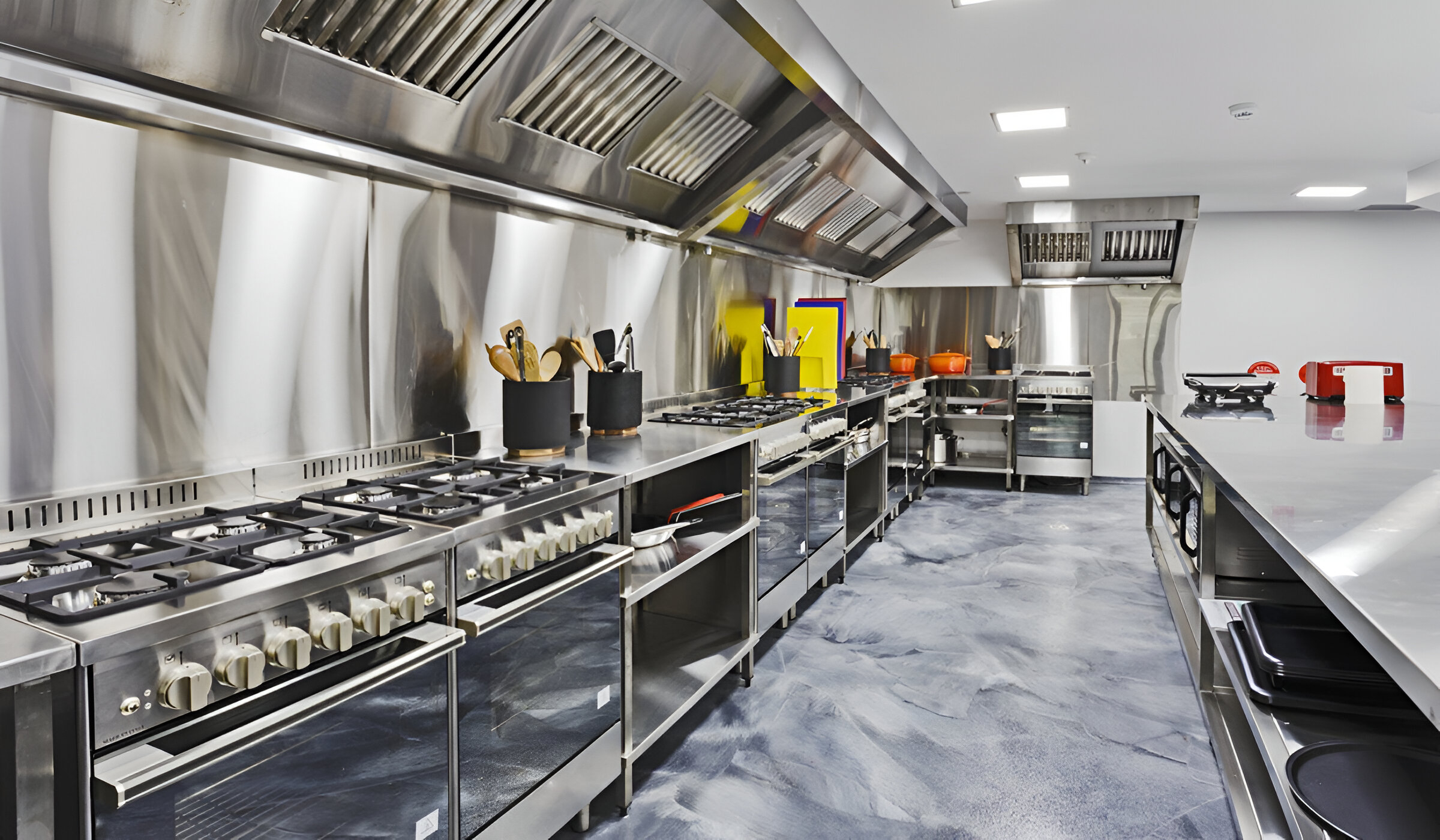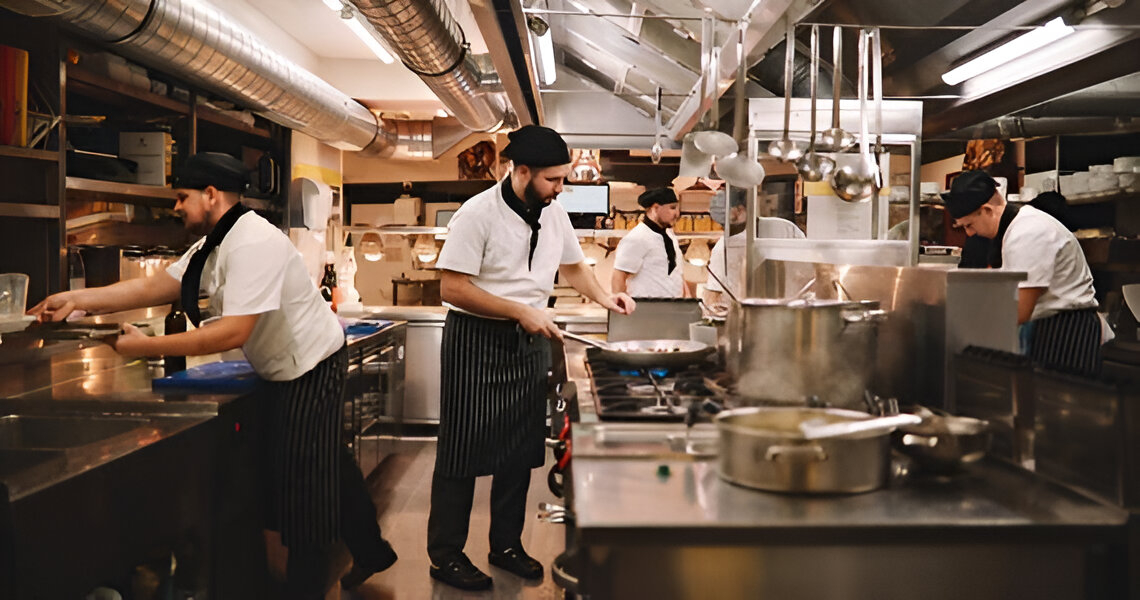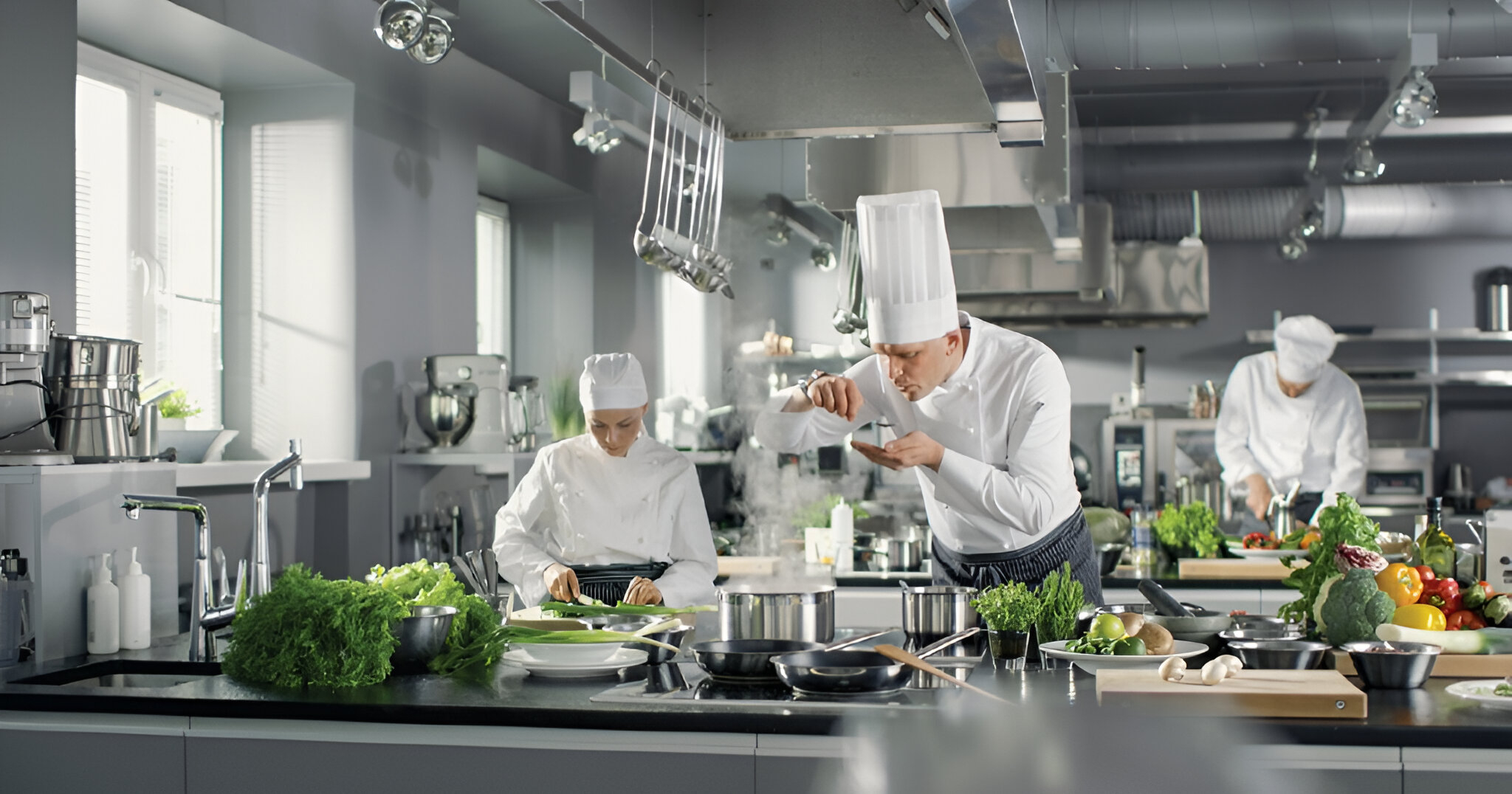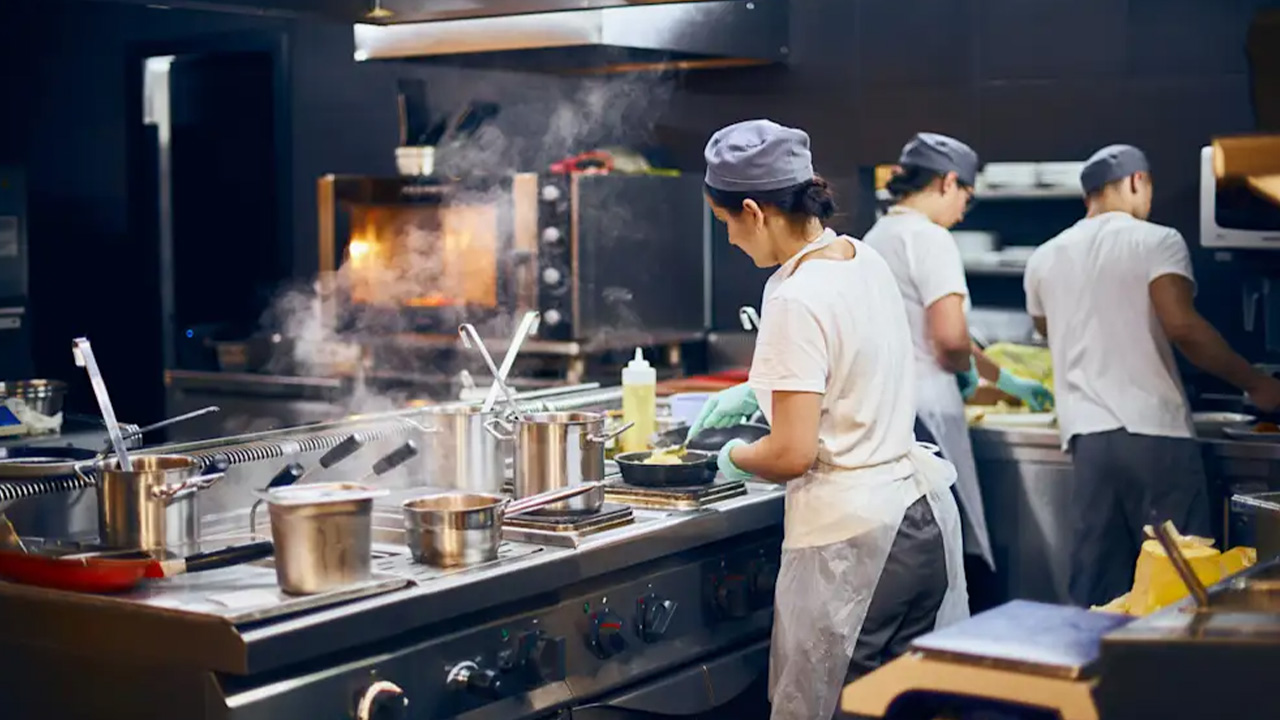The growth of online food delivery has changed the way we think about eating out. It has opened up new business models like cloud kitchens. Also called ghost kitchens, these places work only in commercial kitchen spaces. They focus just on making food and delivering it. They do not need a regular storefront. This change lets business owners enter the fast-growing food delivery market at a lower cost and with more freedom.
Understanding the Cloud Kitchen Business Model
Cloud kitchens are delivery-only restaurants that use websites and apps to connect with customers. They use technology to make their operations easier, like managing orders, keeping track of inventory, and planning deliveries. Because they do not need a physical dining area, cloud kitchens save money on rent, staff, and utilities.
This setup gives owners more flexibility. They can try out different types of food under different brand names to meet the needs of many customers. With lower startup costs than regular restaurants, cloud kitchens attract new restaurant owners and established brands that want to grow through food delivery.
The Rise of Cloud Kitchens in India
India’s food delivery market has grown a lot. This growth is thanks to more people using smartphones, busy lifestyles, and a rising gig economy. Because of this demand, cloud kitchen concepts have become popular. Major food delivery services in India, like Zomato and Swiggy, see this potential. They have even started their own cloud kitchen programs to help new restaurant owners.
For well-known brands, cloud kitchens are a way to grow without needing a lot of money for a new physical location. This method allows them to try new menu items, reach specific areas, and take advantage of the delivery-only trend.
Cloud kitchens are cost-effective and flexible. They are now a big part of changing India’s food industry. This gives them an edge in the fast-changing world of dining.
Core Components of a Successful Cloud Kitchen
The cloud kitchen model has many advantages, but its success depends on a few key parts. First, picking the right commercial kitchen space is important. The location matters a lot. Being close to the target customers is crucial.
Next, keeping high food safety standards is just as significant. Following strict hygiene rules, handling food properly, and using good ingredients are necessary to build customer trust and loyalty.
Lastly, using technology well is essential for cloud kitchen operations. A good POS system helps with fast order processing. A dependable KDS checks order accuracy. Using these technologies makes work easier and improves the customer experience.
Initial Steps for Launching Your Cloud Kitchen
Starting your cloud kitchen journey requires careful planning and smart choices. First, do detailed market research. Figure out who your target audience is. Look at what your competitors are doing and find gaps in the market.
This research will help you create your menu, set your prices, and position your brand, giving you a strong start for success.
Identifying Your Niche in the Market
In the busy food delivery market, it’s important to find a special place for your cloud kitchen to succeed. You should choose a specific type of food, dietary trend, or a certain group of customers to stand out from others.
Doing detailed market research is key to find groups that are not served well or popular foods that need new options. Think about your skills, resources, and what you are passionate about. This will help you pick a niche that fits your knowledge and appeals to a specific group of customers.
By focusing on a certain market, you can create a unique brand, attract loyal customers, and have an advantage in the food business.
Legal Considerations and Compliance in India
Before starting your cloud kitchen in India, it’s very important to follow legal rules and stay compliant. The first step is to get all the required licenses and permits. This means you need to register your business and get a Food Safety and Standards Authority of India (FSSAI) license. You also have to follow local municipality rules.
You must ensure that your kitchen meets fire and safety rules. This includes having the right safety equipment, good ventilation, and proper waste management systems.
It’s smart to talk to legal experts who know about food industry laws. They can help you understand the various licenses and permits you need. This ensures that your business follows all the legal requirements in India. Getting legal help is especially helpful when signing a commercial lease to protect your interests.
Design and Infrastructure Planning
Creating a smart kitchen layout is important for a cloud kitchen, where space can be small. Think about things like how work flows, where equipment is placed, and how easily staff can move around.
A good layout helps things run smoothly, reduces mistakes, and keeps the working area safe. This all helps to make your kitchen more efficient.
Optimizing Kitchen Layout for Efficiency
An efficient commercial kitchen layout is very important for a cloud kitchen to run smoothly and deliver on time. You should think about a workflow that cuts down on extra movements and makes the best use of space.
Set up separate areas for receiving, storage, food prep, cooking, packing, and dispatch. This helps keep tasks apart, lowers the risk of cross-contamination, boosts efficiency, and keeps the kitchen clean.
Also, place kitchen equipment wisely to cut down on steps for the staff. Arranging cooking tools, sinks, and work surfaces in a smart way helps reduce tiredness and increases productivity. This is very important in a busy cloud kitchen.
Essential Equipment and Technology Integration
Getting the right tools and technology for your cloud kitchen is very important. This is necessary for smooth and efficient operations. You need various cooking appliances that fit your menu. Also, you should have refrigerators, freezers, and a good ventilation system.
It’s a good idea to invest in a strong POS system. It should work well with popular online ordering platforms. This makes order management easier, simplifies payments, and gives helpful customer data.
Lastly, a KDS is very important too. It helps kitchen staff see incoming orders clearly. This technology helps keep orders flowing smoothly, reduces mistakes, and speeds up food prep time. All of this leads to faster delivery and happier customers.
Building a Strong Brand and Online Presence
In a digital-focused business model, having a strong brand identity and online presence is crucial. Your brand needs to show what makes you special, who your audience is, and the dining experience you want to provide.
A clear brand identity helps to build trust, draw in customers, and set your cloud kitchen apart in the crowded online market.
Importance of a Compelling Brand Identity
A strong brand identity is very important for a cloud kitchen. It acts as the face of your business online. This identity includes your brand name, logo, visuals, tone of voice, and messages. These elements shape how customers see your brand.
Create a unique brand name and logo that match your food style. They should connect with your target audience. Use high-quality food photos and eye-catching visuals to show off your menu. This will attract online customers.
A solid brand identity builds a memorable online presence. It helps you stand out from others in the food delivery market. Good branding on all online platforms builds recognition and trust, which is key for lasting success.
Leveraging Social Media and Online Ordering Platforms
Social media and online ordering platforms are essential for cloud kitchens. Use sites like Instagram and Facebook to show off your brand, connect with potential customers, and create a community around your food.
Work with popular food delivery services in India to increase visibility and reach more people. Make sure your profile stands out with great pictures, interesting descriptions, and fair prices.
Take care of your online reputation by replying to reviews, helping customers with questions, and keeping a positive image online. Consider using social media ads and focused digital marketing campaigns to boost brand visibility, attract new customers, and bring more orders to your cloud kitchen.
Operational Strategies for Cloud Kitchens
Efficient and clear operational plans are key to a successful cloud kitchen. Focus on improving how work gets done, keeping food quality steady, and making sure orders are delivered on time.
Set up systems to manage inventory, control costs, and simplify tasks. This helps to boost efficiency and increase profits. When you focus on smooth operations, your customers will have a better experience.
Streamlining Operations for Speed and Quality
Maintaining quality and speed is very important in the cloud kitchen model. You should use standardized recipes, control portions, and check quality at each step of food preparation. This helps keep food consistent, no matter how many orders you have.
Train your kitchen staff on how to handle food, cook properly, and meet quality standards. A well-trained team helps keep food quality and consistency, which is key for customer happiness and getting them to come back.
Use technology to make things run smoother and shorten delivery times. GPS delivery tracking and order management software give real-time updates, ensuring orders are delivered on time. This improves customer satisfaction and makes operations easier.
Effective Inventory and Supply Chain Management
Effective inventory management is very important for the profit of a cloud kitchen. Use a system that keeps track of stock levels, checks expiry dates, and reduces food waste. Build strong partnerships with trustworthy suppliers who can deliver fresh ingredients on time.
Take advantage of technology by using inventory management software. This software helps automate stock tracking, gives real-time information about stock levels, and creates reports that help with ordering. This can also reduce waste and boost efficiency.
By improving your supply chain and managing inventory well, you can lower food costs, work more efficiently, and keep a steady supply of fresh, high-quality ingredients. This all leads to the success of your cloud kitchen.
Marketing Strategies for Growth
Great food and service are important, but effective marketing is key to growing your business and bringing in new customers. Use a mix of online and offline methods to get the best results.
Take advantage of social media, work with food bloggers, and use focused online ads to connect with your target customers. Also, look for partnerships and offers to attract more people.
Targeted Digital Marketing Tactics
Targeted digital marketing is very effective for reaching potential customers online. Use social media ads to create campaigns that focus on demographics, interests, and online behavior.
Work with food bloggers and influencers in your city. They can review your menu, make exciting content, and connect with their followers. Offer special discounts and deals through these partnerships to encourage orders.
Search engine optimization (SEO) is just as important. Make sure your website and online listings have the right keywords. This will help people find your cloud kitchen on search engines and bring organic traffic to your ordering platforms. By using these targeted digital marketing tactics, you can reach your audience, increase traffic to your online platforms, and grow your cloud kitchen successfully.
Building Partnerships and Collaborations
Strategic partnerships and collaborations can greatly help your cloud kitchen gain more reach and become more well-known. You can work together with other local businesses, like gyms, co-working spaces, or corporate offices. This can allow you to offer catering services or special meal deals.
Join up with food delivery platforms that can provide marketing support and help you reach more customers. Use these platforms to promote your brand, provide discounts, and take part in food festivals or online events. This approach can help you get more visibility.
Think about teaming up with food bloggers and social media influencers who match your brand and audience. They can create exciting content and help you reach more people. By looking for these partnerships, you can reach new customer groups, improve your brand visibility, and drive growth. This will help strengthen your cloud kitchen’s position in the market.
Conclusion
In conclusion, the Cloud Kitchen business model has great potential for growth if done correctly. Each step is important. This includes finding your niche, following legal rules, creating an effective kitchen layout, and building your brand. When Cloud Kitchen owners focus on improving their operations and establishing a strong brand, they can improve their online presence and make their work more efficient. Using digital marketing strategies and building partnerships are vital for growing in this tough market. With the right support from Cloud Kitchen consultants, new entrepreneurs can handle the challenges of the market and grow their business in a sustainable way.
Frequently Asked Questions
How do I choose the right location for my cloud kitchen in India?
Choosing the best spot for your cloud kitchen in India, especially in a popular area like Mumbai, depends on a few important things. You should think about how close you are to your target customers. It is also important to ensure that deliveries are easy. Competitive lease terms matter, too. Look at the local population, delivery services available, and nearby competitors. This will help you make a smart choice for your cloud kitchen.
What are the key legal requirements for starting a cloud kitchen in India?
In Chennai, Tamil Nadu, it is important to follow the rules. You need to get an FSSAI license and register your business. Make sure to follow local municipality laws and focus on safety measures, especially fire safety. It is good to talk to legal experts for detailed guidance.
How can cloud kitchen consultants aid in business growth?
Cloud kitchen consultants offer expert insights and detailed guidance. They support you at every step of the way. This helps to keep everything transparent. Their help can also improve your business strategy, which can lead to growth and success.
For interesting Wedding Posts, follow us on Instagram.






